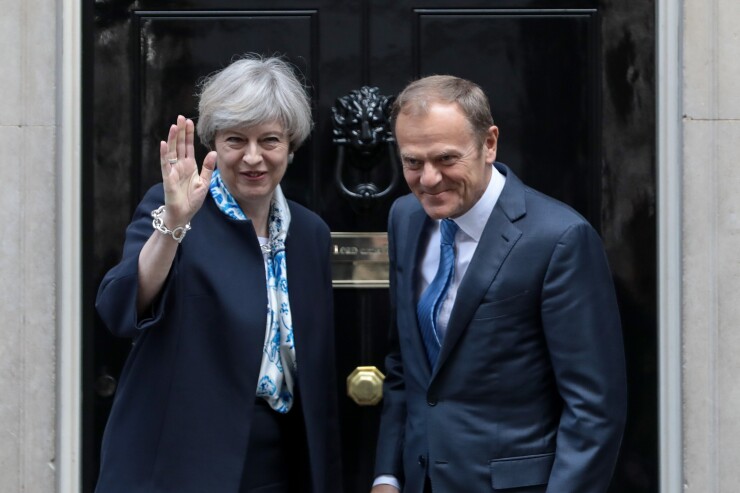Nine months after the United Kingdom’s shock referendum vote to exit the European Union, termed Brexit, the end of the beginning is complete. On March 29, the U.K. delivered its official notice, under Article 50 of the Lisbon Treaty, to leave the EU before the end of 2019. Ahead lies two years of complex and undoubtable acrimonious negotiations between the U.K. and the remaining 27 EU states on the divorce terms and future trading relations.
There are major uncertainties surrounding the process for U.S. businesses trading in the U.K., or using it as a platform to trade into the rest of the EU. Depending on the outcome of the negotiations, companies will need to understand and realign their trading models to avoid risks to supply chains, new compliance burdens and potential cash flow losses.
The magnitude of the above risks will depend on the speed and tone of the Brexit negotiations over the next two years. Some of the early, aggressive rhetoric by both sides has already been dropped—but national objectives of the U.K. and EU27 may yet rekindle them.

The Negotiating Issues and Risks for U.S. Businesses
Single Market Access
Issue: A central U.K. demand in the negotiations will be the right to control its own immigration and to no longer be subject to the European Court of Justice, which is the ultimate judicator on most EU trade and tax issues. This will almost certainly mean the U.K. will leave the EU Single Market, and its aligned Customs Union, on Brexit.
Risk: The impact will be that exports from the U.K. to the EU post Brexit could be subject to tariffs for the first time, which, on average, will add 4 percent to the cost of all goods. This may undermine the economics for U.S. businesses of using the U.K. as their production or import base for the EU. This problem will become particularly acute in the event that no meaningful trade agreement can be struck, and the U.K. reverts to World Trade Organization terms—known as a “Hard Brexit.” In addition to the tariff threat, there may be increased non-tariff barriers, including new product standards requirements, border controls and quota restrictions.
Immigration Controls
Issue: The U.K.’s desire to take control over immigration from the rest of the EU—which accounts for over 5 percent of the U.K.’s population—may restrict workforce opportunities. Immigration levels to the U.K. from the rest of the EU have been rising in the past 10 years as the country has performed well compared to a sluggish EU.
Risk: After Brexit, there will be no material changes to U.S. companies’ ability to send U.S. nationals to the U.K. for short visits or longer-term assignments. However, the U.K.’s growth has depended on large imports of low-cost, skilled labor from the rest of the EU. This may make continued reliable workforce supply unreliable or even more costly.
VAT (Sales Tax)
Issue: On Brexit, the U.K. will no longer be obliged to follow the EU rules on Value Added Tax (VAT) contained within the EU VAT Directive. It will also leave the EU VAT regime, and trade between the U.K. and the EU27 will be liable to the same VAT and reporting obligations as similar taxable supplies from or to the U.S.
Risk: This will place additional reporting and VAT payment obligations on US businesses operating into the U.K. While VAT is generally always recoverable by companies, there may be cash flow delays, for example, on new import VAT charges.
Company Taxation
Issue: The EU has little direct say in corporate income tax affairs of the member states. However, it does exert indirect influence on several such issues for more complex group companies including reporting, interest charges, royalties and dividends.
Risk: The U.K. will be anxious to retain all the favorable US GAAP tax exemptions and reliefs available to EU members. It may well seek to push further on corporate tax reform to retain U.S. companies, including dropping its headline corporation tax beyond the scheduled 17 percent.
Economic and Constitutional Uncertainty
Issue: Brexit will place a cloud over the otherwise impressive economic performance of the U.K. More seriously, anti-Brexit politicians in Scotland and Northern Island, two of the members of the U.K. (England and Wales making up the union) are threatening their own independence votes.
Risk: The U.K. has been one of the most economically successful developed countries in recent years, which has encouraged many U.S. businesses to start up and expand their operations there. The uncertainties and distractions of Brexit may undermine the country’s performance and potentially undermine growth plans for U.S. companies.





